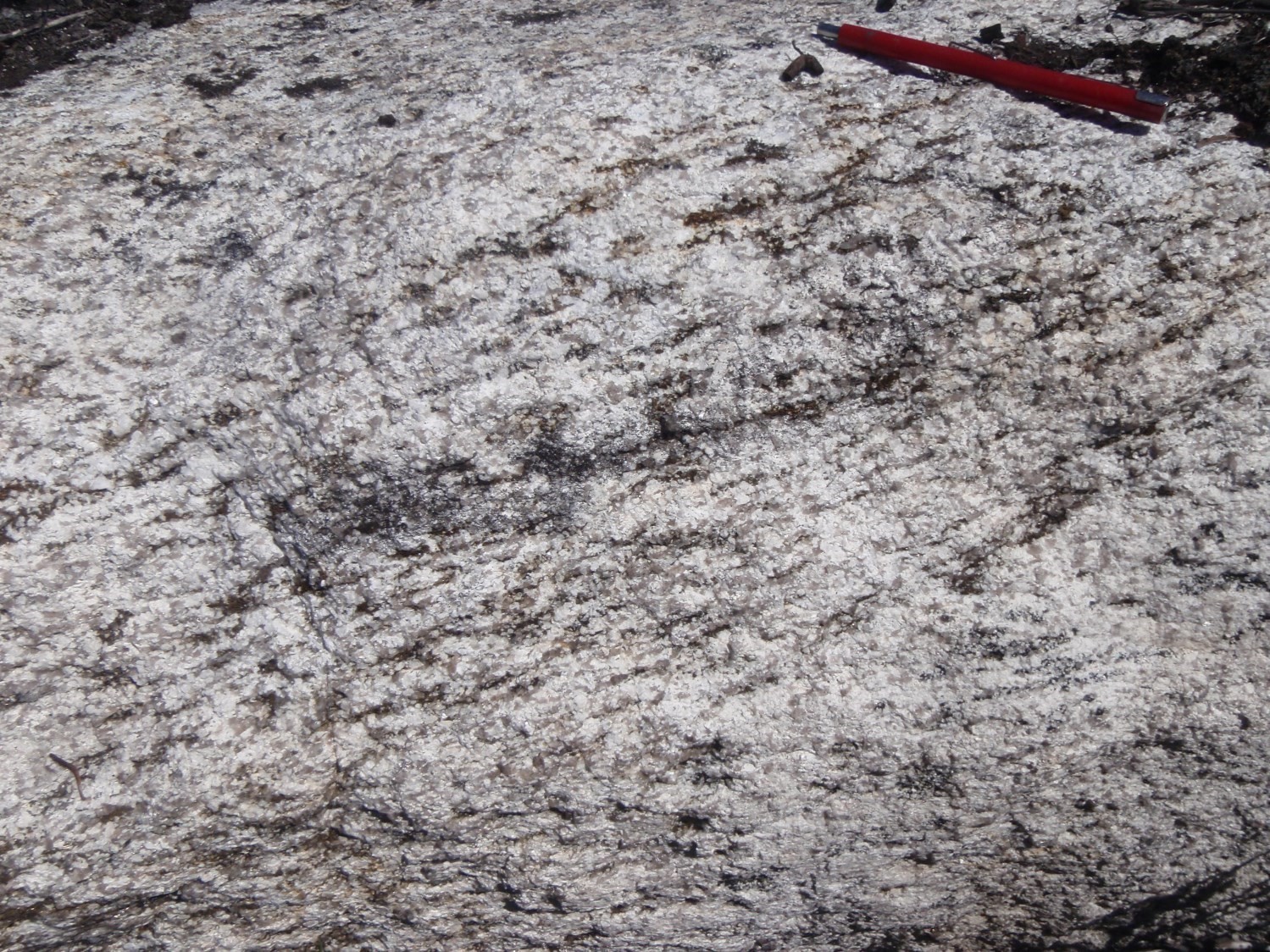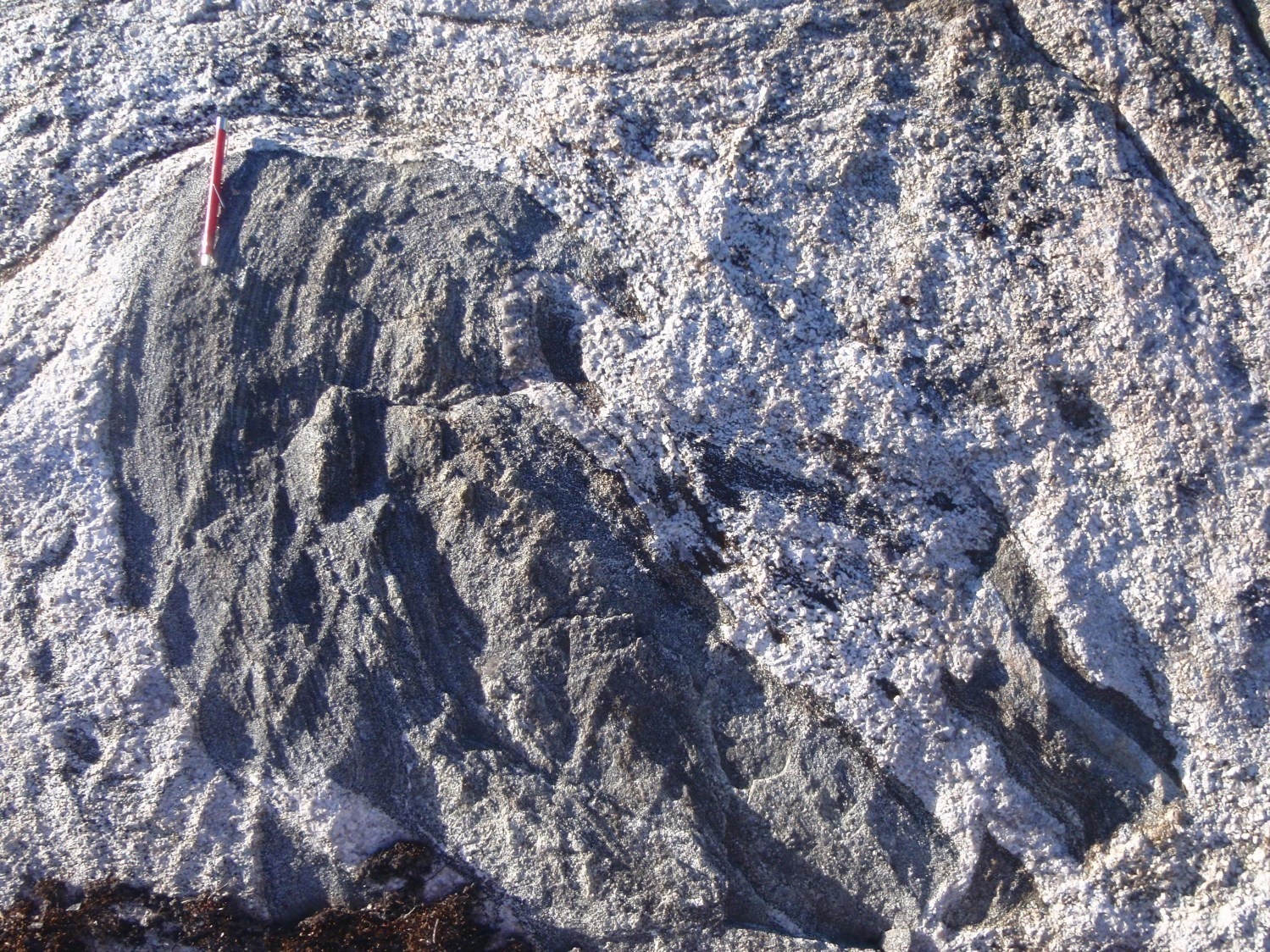
Last modified:
DISCLAIMER: This English version is translated from the original French. In case of any discrepancy, the French version shall prevail.
| Author(s): | Moukhsil and Doucet, 1999 |
| Age: | Neoarchean |
| Stratotype: | None |
| Type area: | Village Lakes area (NTS sheet 32B03) |
| Geological province: | Superior Province |
| Geological subdivision: | La Grande Subprovince |
| Lithology: | Tonalite and monzogranite |
| Category: | Lithodemic |
| Rank: | Lithodeme |
| Status: | Formal |
| Use: | Active |
None
Background
The Béryl Sud Pluton was defined by Moukhsil and Doucet (1999) in the Village Lakes area (sheet 33B03) to describe a late-tectonic intrusion cutting the Eastmain Group south of Béryl Lake. Mapping work of Bandyayera and Caron-Côté (2019) shows that this intrusion extends further south, in the NW part of sheet 32O14 and the NE corner of sheet 32O15.
Description
Moukhsil and Doucet (1999) subdivided the Béryl Sud Pluton into two separate units: nAbes1 and nAbes2.
Béryl Sud Pluton 1 (nAbes1): Homogeneous Foliated Tonalite
Unit nAbes1 makes up 98% of the Beryl Sud Pluton. It consists of homogeneous medium-grained, locally coarse-grained, foliated tonalite and contains centimetric to decimetric pegmatitic pockets. The rock is light grey in altered surface and medium to dark grey in fresh exposure. In the Village Lakes area (sheet 33B03), unit Abes1 contains 5% locally migmatized biotite-andalusite paragneiss enclaves. To the NE of the Glas Lake area (sheet 32O14), the Béryl Sud Pluton tonalite contains metric to decametric enclaves of amphibolitized diorite (5-20%) and tonalitic gneiss (1-5%). In places, enclaves are partially assimilated, giving the rock a heterogeneous and heterogranular appearance with diffuse contact restites. In proximity to the enclaves, the tonalite grain size is coarser than in the rest of the rock. Foliated tonalite is characterized by 2-10% biotite, 1-5% hornblende and 1% magnetite.
Béryl Sud Pluton 2 (nAbes2): Leucocratic Monzogranite, Pegmatitic
Unit nAbes2 consists of leucocratic monzogranite, usually pegmatitic, showing megacrystals of plagioclase, K-feldspar and quartz. A minor amount of biotite is present. This unit was only observed in the Village Lakes area (Moukhsil and Doucet, 1999).
Thickness and Distribution
The Béryl Sud Pluton outcrops NE of Glas Lake (sheets 32B03, 32B02, 32O14 and 32O15). It extends in an E-W direction over a distance of 20 km and has a maximum width of 6 km.
Dating
None.
Stratigraphic Relationship(s)
The Béryl Sud Pluton intruded in the contact zone between the Eastmain Group to the north, and the Champion Complex to the south. To the west, it is cut by the Quindèle Pluton. To the east, compilation work shows that the Béryl Sud Pluton intrudes into migmatized paragneiss of the Laguiche Complex, and that it is separated from the Lac des Montagnes Group by the Glas Shear Zone.
Paleontology
Does not apply.
References
Publications available through SIGÉOM Examine
MOUKHSIL, A., DOUCET, P. 1999. GEOLOGIE DE LA REGION DES LACS VILLAGE. MRN; RG 99-04, 33 pages et 1 plan.
BANDYAYERA, D., CARON-COTE, E. 2019. Géologie de la région du lac des Montagnes, sous-provinces de La Grande, de Nemiscau et d’Opatica, Eeyou Istchee Baie-James, Québec, Canada. MERN; BG 2019-03.
Suggested citation
Ministère de l’Énergie et des Ressources naturelles (MERN). Béryl Sud Pluton. Quebec Stratigraphic Lexicon. https://gq.mines.gouv.qc.ca/lexique-stratigraphique/province-du-superieur/pluton-de-beryl-sud_en [accessed on Day Month Year].
Contributors
|
First publication |
Daniel Bandyayera, P. Geo., Ph.D. daniel.bandyayera@mern.gouv.qc.ca (redaction) Mehdi A. Guemache, P. Geo., Ph.D. (coordination); Patrice Roy, P. Geo., M.Sc. (critical review); Simon Auclair, P. Geo., M.Sc. (editing); Céline Dupuis, P. Geo., Ph.D. (English version); Ricardo Escobar Moran (HTML editing). |



